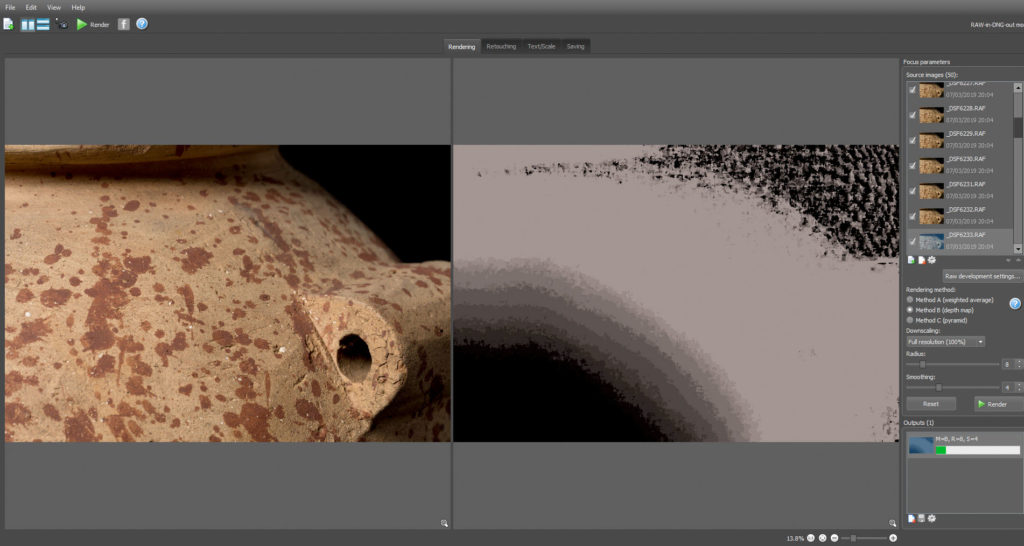

To do this I invoke: align_image_stack -a aligned_ -v -m -g 10 -C *.tiff Next we need to align the images so that they are all exactly over each other. This is needed because Hugin works best with tiff files. This command reads in all the CR2 files and generates TIFF files from them. There are lots of different options you can pass to dcraw to make it do different coolness for you, but for the sake of this post I kept the defaults. I copied them off my CF card into a directory on my Linux box and ran the following command: dcraw -T *.CR2 These nine images were shot in RAW on my Canon 30D. For the example used in this post, I shot 9 images: The Process: When shooting Macro photography for focus stacking I use a tripod and rails to adjust the area of the shot that is in focus. Although used primarily for panorama stitching (which I used to make the Venice stitch) it also works well for focus stacking.
#Free image stacking software software#
As to focus stacking directly the only software package I use is Hugin. I prefer to work with opensource software, but I am not against purchasing software when a good alternative doesn’t exist in the OSS world. The Software: I do all my photography work in Linux (Gimp/Aftershot Pro/DarkTable/Hugin/QtPFSGui/etc). In this post we will talk about how I focus stack in Linux. In focus stacking, one combines the in-focus regions of various images to render one image. It’s a little related to HDR in that in HDR one combines the dynamic ranges of many images into one HDR image. Maybe your lens looks best at f5.6 and you don’t want to go all the way to f11.Īdd to this the fact that f11 takes a lot of light and you realize that shooting with a small aperture may not get the result you want.įocus Stacking : Focus stacking is the process of taking many pictures with different elements of the image in focus and then combining the images so that the resultant image is in focus. Some lenses may also not be at there best at f11. So if you are shooting something really thick and you want it all in focus f11 (or smaller) may not be enough. You still may not have enough depth of field. Just shoot at small apertures and stuff will be in focus. This means that shooting at f11 will have a much larger depth of field than shooting at f2.8. Shoot with a very small aperture: As the hole in the camera/lens gets smaller, the depth of field gets deeper. Lets look at both of these options a little closer. If you want to take photos that have lots of stuff in focus, you have two options: This means that the amount of stuff actually in focus in the picture is very thin. For instance, macro lenes and macro methods tend to produce a very shallow depth of field.

Macro photography also poses many changes. I don’t know why I love it, but so far it is my favorite type of photos to take and to edit. To me taking images of tiny things is just freaking awesome.

One of my favorite areas of photography is macro photography.


 0 kommentar(er)
0 kommentar(er)
